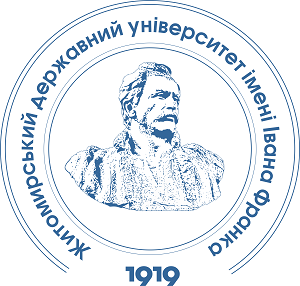COASTAL AND SWAMP VEGETATION OF MINING SITES IN THE CENTRAL POLISSIA
DOI:
https://doi.org/10.32782/naturaljournal.10.2024.26Keywords:
phytocenoses, restoration of ecosystems, quarry, wetlandsAbstract
The article is devoted to studying the phytocoenotic diversity of coastal-water and swamp vegetation in the territory of the Central Polissia mining. The purpose of the article is to study the syntaxonomic diversity and features of the distribution of coastal-water and swamp vegetation in the territory of the Central Polissia mining areas. In accordance with the purpose, the following tasks were set: to classify the vegetation of coastal-water and swamp vegetation on the territory of the Central Polissia mine workings; to study the phytocenotic diversity of plant groups of coastal water and swamp vegetation in the territory of the Central Polissya mining; to study the peculiarities of the placement of coastal water and swamp vegetation on the territory of the Central Polissia mining operations. The research materials are geobotanical descriptions created by stationary, semi-stationary, and routeexpedition methods in the territory of the Central Polissia mining in 2019–2024. Vegetation classification was carried out according to the principles of the Brown-Blanke school. During the research, we found coastal water and swamp vegetation in 29 quarries out of 37 examined, which is 78%. Such high indicators indicate favorable conditions for the formation of this type of vegetation during the open mining of minerals in the territory of the Central Polissia. Coastal water and swamp vegetation on the territory of the Central Polissia mine belongs to 3 classes, 7 orders, 10 unions, 26 associations, defined according to the Braun Blanche system. The highest level of phytocenotic diversity is characteristic of the classes of plant groups Phragmiti-Magnocaricetea (88%), Scheuchzerio palustris – Caricetea fuscae (8%), and Isoëto-Nanojuncetea (4%). At the level of associations, those belonging to the Phragmiti- Magnocaricetea class are most common. Thus, the Phragmitetum australis association is observed in 16.8% of localities; Typhetum angustifoliae – 13.5%; Typhetum latifoliae – 9.7%; Glycerietum fluitantis – 8.4%. The key factor affecting the phytocenotic diversity of quarries is the presence of a large number of natural swamps in the immediate vicinity. Coastal water and swamp vegetation on the territory of the Central Polissia quarries is mostly ecotonic in nature, sparse in species with low projective coverage of diagnostic species, and small areas of continuous massifs. In most cases, there are no descriptions that can be attributed to the nomenclature type.
References
Дубина Д.В. Продромус рослинності України. Київ : Наукова думка, 2019. 784 с.
Коніщук В.В. Концепція збалансованого розвитку боліт і торфовищ України. Агроекологічний журнал. 2010. № 4. С. 18–23.
Тимченко А.Ю., Хом’як І.В. Автогенні сукцесії в екосистемах гірничих виробок в долині річки Гуйва. Біологічні дослідження – 2019: збірник наукових праць. Житомир : «Полісся», 2019. С. 353–354.
Хом’як І.В., Василенко О.М., Гарбар Д.А., Андрійчук Т.В., Костюк В.С., Власенко Р.П., Шпаковська Л.В., Демчук Н.С., Гарбар О.В., Онищук І.П., Коцюба І.Ю. Методологічні підходи до створення інтегрованого синфітоіндикаційного показника антропогенної трансформації. Екологічні науки. 2020. № 5 (32). T. 1. С. 136–141. https://doi.org 10.32846/2306-9716/2020.eco.5-32.19.
Хом’як І.В. Синтаксономія відновлюваної рослинності кар’єрів Центрального Полісся. Український ботанічний журнал. 2022. № 79 (3). С. 142–153. https://doi.org/10.15407/ukrbotj79.03.142.
Якубенко Б.Є. , Попович С.Ю. , Устименко П.М., Дубина Д.В., Чурілов А.М. Геоботаніка: методичні аспекти досліджень. Ліра, 2020, 316 с.
Helgeson T. A Reconnaissance-Level Quantitative Comparison of Reclaimed Water, Surface Water, and Groundwater. Alexandria, VA: WateReuse Research Foundation. 2009. 141 p.
Hennekens S. Turboveg for Windows. 1998–2007. Version 2. Wageningen: Inst. voor Bos en Natuur, 2009. 84 p.
Khomiak I.V., Bren A.L., Medvid O.V., Khomiak A.К., Maksymenko I.Yu. Dynamics of terrestrial vegetation on the territory of quarries as a model of post-military restoration of wild nature. Ukrainian Journal of Natural Sciences. 2023. № 5. P. 61–69. https://doi.org/10.32782/naturaljournal.5.2023.7.
Mosyakin S.L., Fedoronchuk M.M. Vascular Plants of Ukraine: а Nomenclatural checklist. Kiev, National Academy of Sciences of Ukraine M. G. Kholodny Institute of Botany, 1999. 345 p.
Shumygai I.V., Mudrak O.V., Konishchuk V.V., Mudrak H.V., Khrystetska M.V. Ecological monitoring of water bodies in Central Polissya (Ukraine). Ukrainian Journal of Ecology. 2021. № 11 (2). Р. 434–440.
Voulvoulis N. Water reuse from a circular economy perspective and potential risks from an unregulated approach. Current Opinion in Environmental Science & Health. 2018. Vol. 2. P. 32–45.
Westhoff V., Maarel E. van der. The Braun-Blanquet approach. Handbook of Vegetation Science. Part V: Ordination and Classification of Vegetation. Ed. By R.H. Whittaker. The Hague, 1973. P. 619–726.






